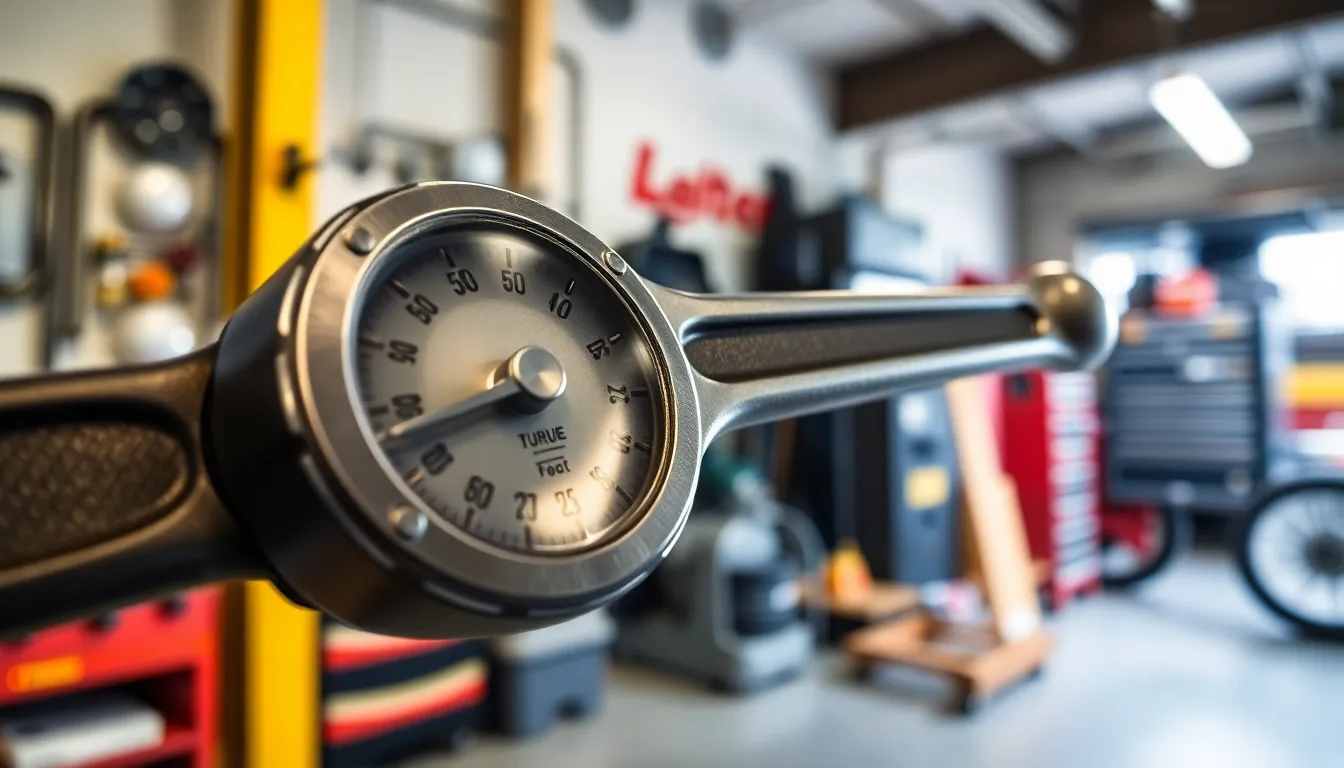Table of Contents
ToggleWhen it comes to torque measurements, understanding the conversion between newton-meters (Nm) and foot-pounds (ft-lbs) is essential for various applications, from automotive repairs to construction projects. Many people find themselves needing to convert 60 Nm to ft-lbs, especially when working with tools or machinery that use different units of measurement.
This conversion might seem straightforward, but getting it right is crucial for ensuring proper torque specifications. Whether tightening a bolt or adjusting equipment, using the correct torque helps maintain safety and efficiency. In this article, readers will discover the simple steps to convert 60 Nm to ft-lbs, along with practical tips for applying this knowledge effectively.
Understanding Torque Measurements
Torque, a measure of rotational force, is crucial in various applications such as automotive repairs and construction. Accurate torque measurements ensure safety and efficiency during assembly and operation.
What Is Torque?
Torque represents the rotational force applied around an axis. It combines both force and distance, indicating how effectively a force can cause an object to rotate. The standard formula for torque is:
[ text{Torque} = text{Force} times text{Distance} ]
Where force is measured in newtons (N) and distance in meters (m). Torque plays a vital role in various industries, influencing equipment performance and longevity.
Common Units of Torque
Torque is measured in several units, primarily:
- Newton-Meters (Nm): The standard unit in the International System of Units (SI). It quantifies torque by applying a force of one newton at a distance of one meter from the axis of rotation.
- Foot-Pounds (ft-lbs): Common in the United States, it refers to the torque produced when a one-pound force is applied at a one-foot distance from the rotational axis.
Both units measure torque effectively, but converting between them requires a clear understanding of their relationships to maintain accuracy in applications.
Conversion Between Newton Meters and Foot Pounds

Understanding the conversion between newton-meters and foot-pounds simplifies the application of torque values in various fields. This section provides the necessary formulas and examples for effective conversions.
The Formula for Conversion
To convert newton-meters (Nm) to foot-pounds (ft-lbs), use the formula:
[
text{Torque (ft-lbs)} = text{Torque (Nm)} times 0.73756
]
Factors include the relationship that 1 Nm equals approximately 0.73756 ft-lbs. This formula allows for quick calculations of torque values, ensuring precision in tasks requiring specific torque specifications.
Examples of Conversion
Consider a few practical examples of converting 60 Nm to ft-lbs:
Example 1:
- 60 Nm to ft-lbs
- Calculation: (
60 times 0.73756 approx 44.25 ) ft-lbs Example 2:
- 100 Nm to ft-lbs
- Calculation: (
100 times 0.73756 approx 73.76 ) ft-lbs - 150 Nm to ft-lbs
- Calculation: (
150 times 0.73756 approx 111.53 ) ft-lbs
These examples illustrate the straightforward nature of these conversions and highlight the importance of accuracy in torque specifications.
Practical Applications of 60 Nm to Ft Lbs
Understanding the conversion between 60 Nm and ft-lbs holds practical significance in various industries. Accurate torque specifications ensure safety, efficiency, and reliability in operations.
Automotive Torque Specifications
Automotive applications frequently require precise torque settings. For instance, engine bolts, wheel lug nuts, and suspension components need specific torque values to maintain proper functioning. Mechanics convert 60 Nm to approximately 44.25 ft-lbs when tightening a vehicle’s bolts, ensuring optimal clamping force. Utilizing accurate torque measurements contributes to enhanced vehicle performance, decreased risk of failure, and improved safety during operation.
Industrial Uses
Industrial settings also rely on accurate torque conversions. Equipment assembly, machinery maintenance, and construction projects necessitate precise torque applications for components like flanges, pipes, and fasteners. In these contexts, converting 60 Nm to ft-lbs helps professionals maintain integrity and secure connections. Misapplied torque can lead to equipment malfunction or safety hazards, emphasizing the need for precise measurements in various industrial tasks.
Tools for Measuring Torque
Accurate torque measurements rely on specialized tools designed for precision. Two commonly used tools are torque wrenches and digital torque meters.
Torque Wrenches
Torque wrenches provide a means to apply a specific torque to fasteners. They come in various types, including beam, click, and preset wrenches.
- Beam Wrenches: Use a visual dial to indicate torque applied. They offer simplicity and reliability but require careful reading.
- Click Wrenches: Emit a clicking sound when the desired torque is reached. They provide audible confirmation, promoting accurate application.
- Preset Wrenches: Set to a specific torque value, ensuring consistent application for repetitive tasks.
These tools offer size variations, catering to different torque ranges, thus fitting various applications from automotive to construction.
Digital Torque Meters
Digital torque meters offer advanced features for precision measurements. Equipped with digital displays and sensors, they enhance accuracy and ease of use.
- Real-time Readings: Display torque values instantly, allowing users to monitor the applied force during operation.
- Data Storage: Record measurements for future reference, aiding in quality control and documentation.
- Adjustable Settings: Allow customization of torque units and thresholds, accommodating different specifications across various industries.
Digital torque meters increase efficiency in settings requiring meticulous torque measurements, such as engineering and manufacturing.
Understanding the conversion from 60 Nm to ft-lbs is vital for anyone working with torque specifications. Accurate measurements ensure safety and efficiency in various applications from automotive repairs to industrial assembly. Using the conversion formula simplifies the process and helps maintain precision.
Employing the right tools like torque wrenches and digital torque meters further enhances accuracy. These instruments are essential for achieving optimal clamping force and preventing equipment malfunctions. By mastering these conversions and utilizing proper measuring tools, individuals can significantly improve their work quality and reliability.








